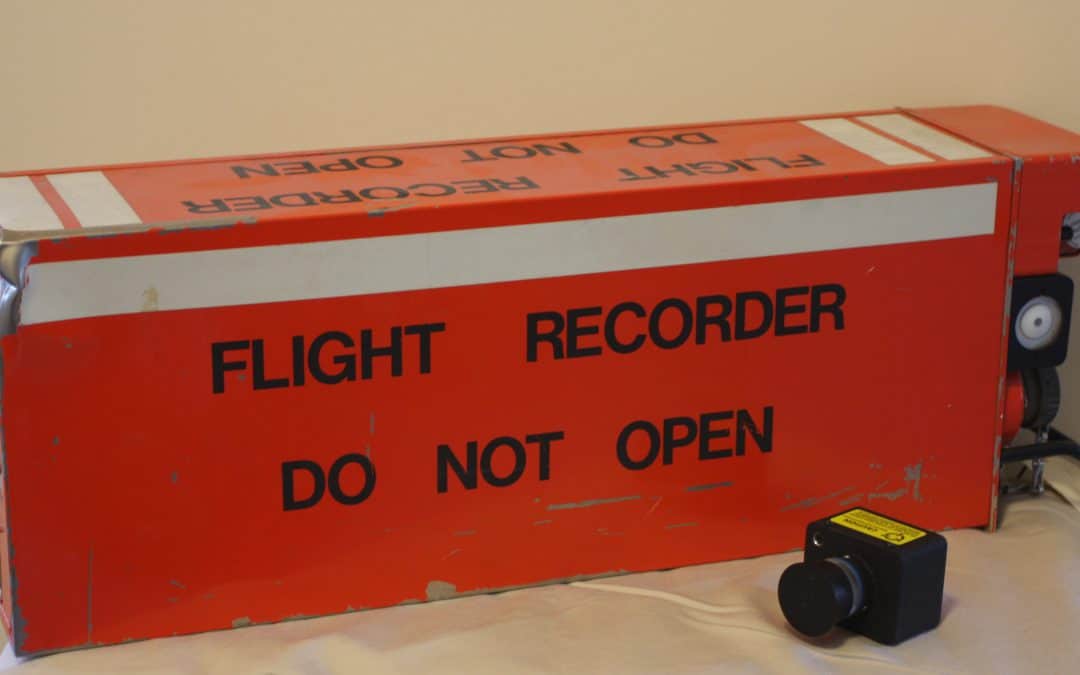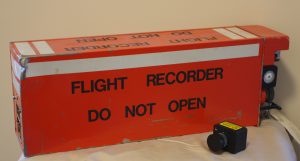In Part 1 of this multi-part series, we took a high level look at the main parts of a Flight Operations Quality Assurance (FOQA) or Flight Data Monitoring (FDM) program.
In this post, we take a more in depth look at Step 1 of how the process works: Downloading the flight data from the aircraft. We will look at flight recorder options but before we do, it is important to understand the role of the Flight Data Acquisition Unit or FDAU (pronounced fe-doo).
Flight Data Acquisition Unit (FDAU)
There are a number of different types of flight recorders available, but what is important to note is that flight recorders are just that – recorders. They are just listening devices that record what is sent to them. We commonly have operators ask us what parameters are available on a particular flight data recorder model, but it is not the recorder model that dictates what is recorded but rather the FDAU. Rather than use this blog to describe the relationship of a FDAU and the flight recorder, we have a video on YouTube that explains this. The first 60 seconds or so explains how the FDAU and Flight Data Recorder are related.
The data that the FDAU sends will vary from aircraft to aircraft, but it will include parameters important for monitoring the operation of the aircraft such as Airspeed, Altitude, Pitch, Roll, etc. If you are interested, the full list of mandatory parameters can be found in FAR 121.344. This used to be referred to as the “88 Parameter Rule”, but the list has since grown to 91.
The reality, however, is that most FDAUs capture and send many more parameters than the minimum mandated by regulations, making this data stream more than suitable for a typical Flight Data Monitoring or FOQA program.
When it comes to deciding how to collect and use this data, operators have two main options: Flight Data Recorders (FDR) or Quick Access Recorders (QAR). There are some other less common options that I will also mention, but these are the most common.
Flight Data Recorders
Many operators may be surprised to learn that a modern Flight Data Recorder is a perfectly acceptable method for collecting and downloading flight data for a Flight Data Monitoring program.
Most modern transport aircraft and helicopters already have a crash survivable Flight Data Recorder (FDR) installed. Requirements vary by country, but generally large, multi-engine turbine powered aircraft (fixed wing and helicopter) will have a Flight Data Recorder equipped. (As an aside, while any recorder installed on an an aircraft is technically a flight data recorder, the term “Flight Data Recorder” is normally reserved for the crash survivable recorder.)
Almost all Flight Data Recorders today are solid state, meaning that the information is stored in non-volatile memory similar to a modern solid state computer hard drive (SSD). In the past, flight data was stored on tape, wire or even foil. While those older recorders may be found in service in some developing nations, they are quite rare today and not well suited for a modern Flight Data Monitoring program – but they can and have been used in the past.
A modern Flight Data Recorder, however, will capture all of the data the FDAU sends it on an easy to access medium. Data can be recovered from the FDR quickly and easily through the use of one of many commercially available “Download Units”. These units plug into the Flight Data Recorder and allow for the transfer of data to the unit’s memory. Once the download is complete, the file can be transferred to a PC, Mac, Laptop, etc.
So you might be asking, if a modern Flight Data Recorder is perfectly acceptable for a Flight Data Monitoring or FOQA program, and I already have them installed on my aircraft, why is there even a market for Quick Access Recorders?
There are a couple of “catches” with using the Flight Data Recorder as part of your FDM or FOQA program:
- Flight Data Recorders are only required to store 25 hours worth of flight data. While some models do store much more than this, the requirement is only to store 25 hours worth of data (once the recorder is “full” it begins overwriting the oldest data). This could be a problem if you are flying 50 hours a week or more. You would be downloading data constantly if you want to achieve 100% coverage of your flights.
- Flight Data Recorders may not be “quick access”. While it is true that once you connect the download unit to the Flight Data Recorder, the data transfer is quite quick and simple; however, getting access to the recorder itself may be a challenge depending on its location in the aircraft.
- Download units are expensive. The hardware required to download data from the Flight Data Recorder is very specialized and expensive. It may be more cost effective to simply purchase cheaper Quick Access Recorders.
Quick Access Recorder
So, what exactly is a Quick Access Recorder or QAR? A QAR is, very basically, a flight data recorder that is not crashed protected. Most (if not all) modern QARs sold today are solid state, similar to the solid state Flight Data Recorders. There are still some “Optical” QARs (OQAR) in service that use optical discs as storage medium but they are becoming phased out in favor of more reliable (and cheaper) solid state QARs. Most QARs “listen to” and record the exact same FDAU data stream as the Flight Data Recorder, so you have access to the same data as you do with the Flight Data Recorder (there are exceptions listed below).
QARs have some significant advantages over Flight Data Recorders. The first is their size. Because a QAR is not crash survivable, it is considerably smaller and lighter – and that is an understatement. While a Flight Data Recorder can weight 10-15 lbs, solid state QARs are measured in ounces.
Another advantage of a QAR is that they store much more data than a Flight Data Recorder (in terms of hours worth of data). While a Flight Data Recorder can store from 25-100 hours, QARs can store 400+ hours of data, reducing the frequency at which you need to download the data.
Also, QARs can truly be quick access. Depending on the recorder model, aircraft and installation process, QARs can be installed in locations that are easily accessible for download, such as the flight deck. Some QARs even offer a wireless transfer option (for a fee), eliminating the need to go to the aircraft to perform the download.
So what’s the catch? QARs are great devices. The only real catch is cost. Unless your aircraft came from the factory with a QAR installed, you are going to have to acquire and install QARs on all of your aircraft. The good news is that QARs are very inexpensive when compared to Flight Data Recorders; however, they will still add costs to your Flight Data Monitoring / FOQA program.
Other Options
While the QAR and FDR are the most common options, there are some other options to be aware of:
QAR w/DAU: Some QARs are equipped with their own data acquisition units. These were more common 20+ years ago when the aircraft FDAU data stream was less “data rich” than it is today. They are fairly uncommon and somewhat unnecessary today but there may still be used models in circulation.
Garmin G1000 (and similar): General aviation and smaller commercial operators can utilize data recorded on a memory card from a Garmin G1000 and similar avionics that support removable memory to run a very effective Flight Data Monitoring / FOQA program. G1000 data we have analyzed in the past has been particularly data rich and very well suited for this purpose.
Streaming: While it is still not wide spread, real time data streaming is slowly gaining traction and can be used for FOQA or Flight Data Monitoring. Because of its cost, though, it is still very rare to hear of a program outside of flight testing that utilizes real time telemetry data.
Which to Chose?
Now that you know the pros and cons of each, which recorder should you use for your program? I certainly cannot answer that in this blog post, as it will depend on your operation, budget and options for your aircraft. In general, though, my position is that if you are serious about Flight Data Monitoring / FOQA and you have the budget, the QAR is a very good investment. But if you are a smaller operator that does not fly that often, using the Flight Data Recorder is a very valid option that many operators have used and continue to use. If your maintenance organization already has download equipment (for maintenance purposes, for example), then you may not have any additional costs at all.
There are certainly many factors to consider, but if you need help making sense of these options, please feel free to give us a call at +1 (613) 903-7147 or send us an email at info@scaledanalytics.com and we would be happy to help.
Flight Data Monitoring
Sky Analyst FDM is a modern, cloud-based Flight Data Monitoring (FDM) and FOQA solution for event detection, reporting and detailed analysis.
FDR Readouts
Sky Analyst FDR can simplify the process for completing your annual Flight Data Recorder (FDR) readout serviceability checks.
Consulting Services
Scaled Analytics has significant experience in the use of flight data for investigating aircraft incidents and accidents.



Trackbacks/Pingbacks